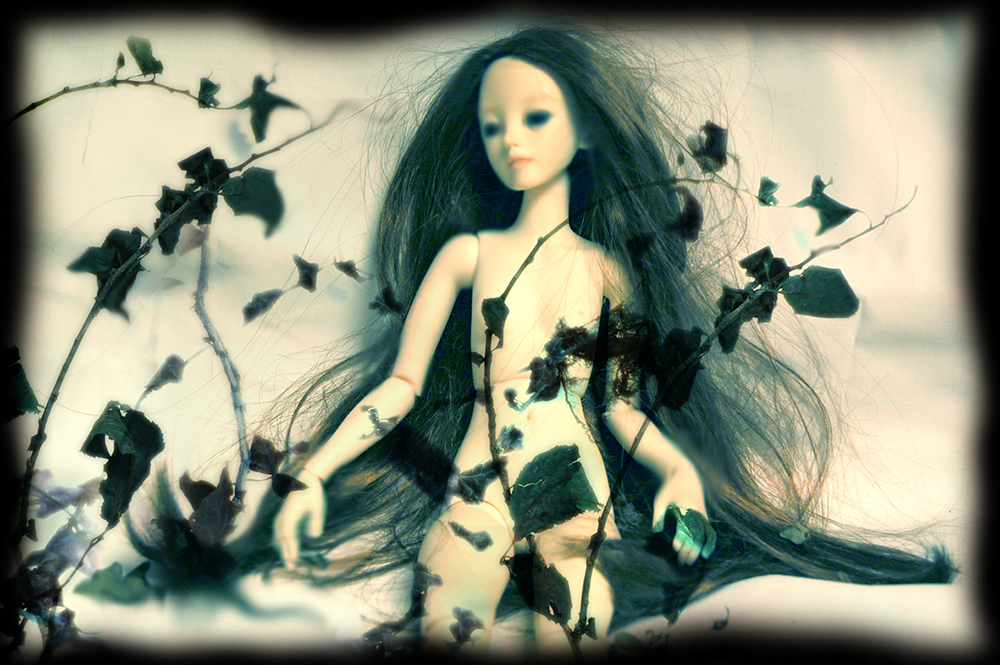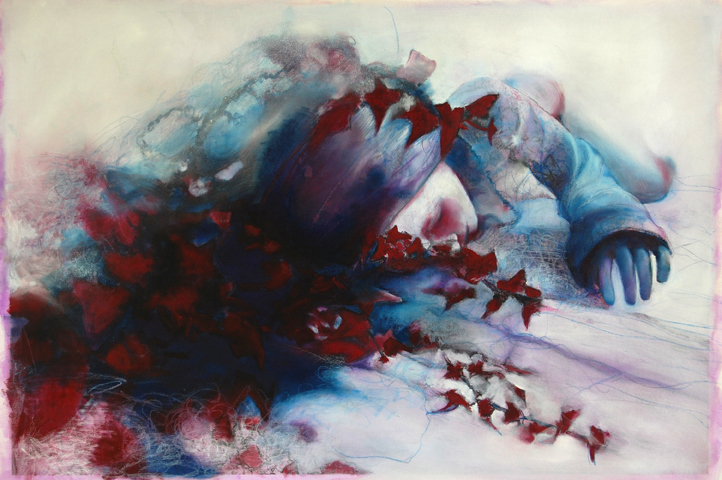Ophelia

Ophelia and the Nigredo phase
Art curators, and also other people have said that my images in my “Nigredo” series are inspired to the myth of Ophelia, and it is true.
Ophelia is the famous character from Shakespeare‘s poem “Hamlet”, and she is mysteriously found dead in a pond – or a small river, actually a brook.
A cleric in Shakespeare’s poem at a certain point hints at the fact that Ophelia must have killed herself, he sings a little tune, and the words in it recall the fact or hypothesis that if someone goes close to water and they die, it is because they threw themselves in: in short because they wanted to die. The cleric’s words throw Laertes, Ophelia’s brother, into rage: “Ophelia is an Angel in Heaven, and she could not have possibly done something for which she is now in hell.”
According to Queen Gertrude, another character from the Shakespeare’s poem, Ophelia was “incapable of her own distress”, and she died because, after having climbed on a willow tree, a brunch broke and she fell into the river. So it was an accident.
Now, there have been many portraits and representations of drowned Ophelia throughout time, and this theme continues to be of great interest to artists today.
How do my images connect to Ophelia?
I have taken a doll and put her beside some leaves and branches, sometimes she is depicted close to a pond of blood, some other she is just lying as if asleep. There is this connection between death and sleep, the eyes are closed, therefore it is either sleep or death. But there is a state of conscience in between death and rest, and that is best described in the alchemy phase of the “Nigredo”..

Nigredo, or blackness, in alchemy means putrefaction or decomposition; but Carl Jung interpreted Nigredo as a “moment of maximum despair, which is a prerequisite to personal development”.
But even alchemists consider Nigredo only a phase, a passage in time, followed by other stages of transformation of the matter, like those of Albedo (whiteness) and Rubedo (redness), that means that after the Nigredo phase, which could be interpreted as a time of incubation and the detachment of dark matter in the soul, there is always resurrection, a phase of rising: rebirth.
Ophelia drowned in the pond, we know that. What I am representing in my images is connected to Ophelia’s character because we see a female body lying down, and she still looks human, she is not a putrefactive body yet. The representation of beauty is recurring for what regards Ophelia’s portraits throughout history; she is depicted as beautiful surrounded by flowers, both when she’s alive and in the stillness of passing.

Ophelia goes definitely through the Nigredo phase of catharsis;
the only difference is that, as opposed to what Jung says, she does not come back, after this time of incubation and freezing of the senses, as a more grown up individual, because she accidentally drowns while pain and “dark matter” come out of her. Ophelia dies because of pain, that is a possible interpretation of her tragedy.
My dolls contain the theme of Ophelia, whether the outcome of distress is death or not, they suggest immobility out of a phase of regenerating, rebuilding of the human soul, catharsis.
The doll in itself is another strong connection to Ophelia: a doll is first of all not a real human being, but an object: it is already dead. A doll immediately recalls death because of its stillness: it is the uncanny resembling of the human, but without a soul. The doll is a way for me to symbolize the real being, as all other objects are, they serve a scope, which is that of placing what’s inside oneself at a distance from the self, reconstructing a place of things that happened, or that are happening, helping me to put in a separate picture the slippery surfaces and facets of the unconscious. Ophelia is a figure that belongs to all of us, because she represents an obscure side of our humanity: she trespasses the threshold of life, and this “going beyond” to a different realm or dimension, is present in everyone at the farthest corners of our existence. The last resort of death is a possibility of escape, and a soothing of the pain.

Another association with Ophelia is the fact that there are always a lot of branches and leaves close to the doll. Why is Ophelia often represented with her body decorated with flowers? One answer could be that the woman’s body is very much connected to nature, the earth and the vegetation are the symbol of life like woman is. Therefore Ophelia, when she sees no alternative for her state of confusion in the rational/symbolic world, the world of culture, she turns to nature: the plants, and the river are something to wear, and nature is a last comfortable asylum.
But in my artwork nature is no longer an healthy asylum, it is rather in a terminal state as the figure of Ophelia is. I often have turned the water of the pond into blood, or a blue lake; poison is all over the ground in my images, and perhaps the doll is there grieving for it or agonizing with it. The poisoned earth is a contemporary issue, and one more reason to depict the death of women.
To go deep into this argument about poison I am going to take you to my next essay about my video “Cyanide“.
